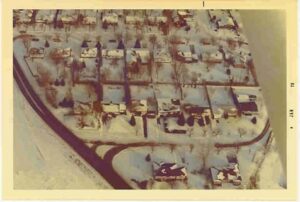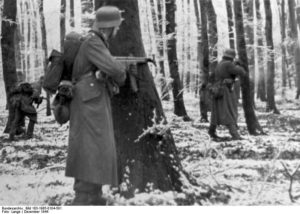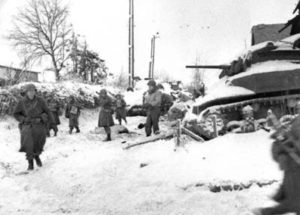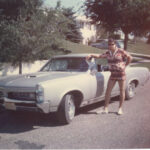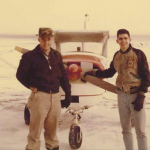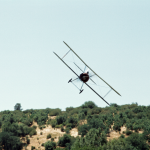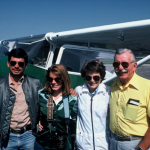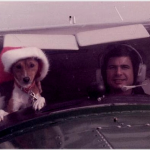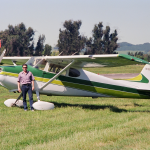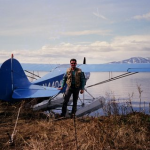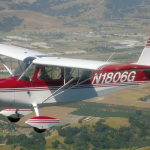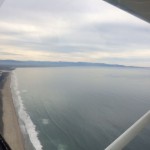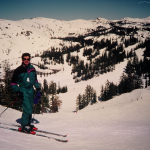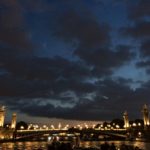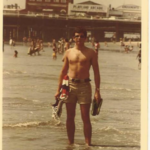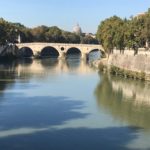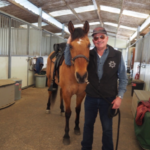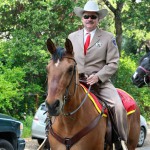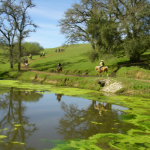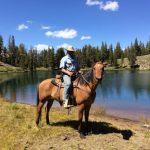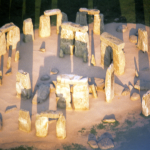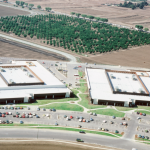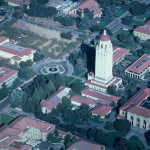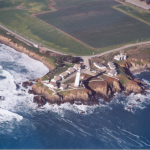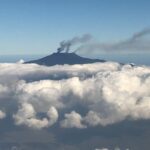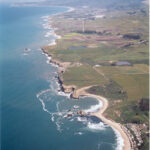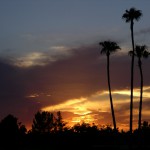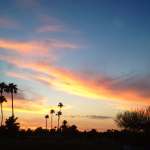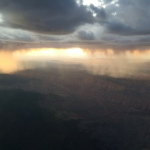Constitution Day -September 17th
By Mark Lindberg, Mtn. View, CA – Nov. 2017
After half a dozen years of the ill-fated “Articles of Confederation” following the Revolutionary War, it became obvious that our new country required a stronger central government in lieu of the weakness and divisiveness of 13 individual states.
Without a constitution, the citizens of a country would be subject the tyranny of the current government leaders. A Constitution has the inertia to delay and deflect the whims of a current majority. Amendments are difficult and require a “super majority”. Following the final writing of the US Constitution in 1789, Benjamin Franklin was asked, “Dr. Franklin what kind of government have you given us..?” Benjamin Franklin replied, “A Republic, madam, if you can keep it…!”
For over 230 years, in spite of a Civil War, economic upheavals, and destructive World Wars, the United States has managed to preserve our Constitution with just over a dozen Amendments following the original ten amendments of the Bill of Rights.
As students of history, the Founding Fathers constructed a Republic that made the Central government preeminent, but then reserved all rights not specifically granted to that central government for the states and the people.
The United States central government was divided into three (theoretically) equal branches. The Legislative Branch passes laws with a House of Representatives proportioned by population, and the Senate representing the individual states. The Executive Branch headed by the President, (elected by an Electoral College that is also a combination of the Legislative formulations) that enforces the Laws, and the Judicial Branch that is the ultimate authority of disputes and quickly began to interpret those Laws.
Several decades later while touring the new United States, French philosopher and historian Alex de Tocqueville(1805-1859) marveled at the efficient separation of the United States Federal system in the publication ”Democracy in America”.
A Warm Christmas in North Dakota by Mark Lindberg
When the Christmas Season arrived in North Dakota, the weather is normally COLD! However, as with folks in Alaska, the weather is worn as a badge of courage. Residents knew how to dress, maintain their vehicles, and the kids safely travel to and from school bundled up.
Growing up in Jamestown, ND, Christmas Eve was always more important than the formal Christmas Day dinner. First of all, there were presents to open that night…! Next, no getting dressed up, and as the daylight turned to an early darkness, There were Christmas lights everywhere. We had a large evergreen in our front yard that was decorated with all blue lights after Thanksgiving. Nearly everyone on our Avenue had extensive outdoor Christmas lighting.
After lunch on Christmas Eve, my Dad and his office manager, Clyde, closed the Construction Company and paid key employees their annual bonus. This was Dad’s opportunity to finalize his shopping, and he would stop at the Elks Club to pick up an order of large prawns for a special hors d’oeuvres.
When Dad arrived home, Mom had been cooking for several hours. The old days of the jelly-like Lutefisk (that nobody but Grandma Lindy enjoyed) were replaced with another fish (and once by hamburgers). Of course, the menu was secondary considering the well-handled heap of presents that seemed to grow as the “Eve” approached.
As the adults (including a few neighbors delivering a gift or dish) enjoyed a cocktail before a “way too delayed dinner” my sister Susan and I organized the presents under a real tree. Mom had a way of peeking (further explaining Dad’s late shopping). After the folks moved to AZ, one year I delivered Mom’s presents in a locked suitcase! Everybody laughed, and Mom waited…
With a wood fire in the living room fireplace, dinner was served. Dessert and coffee for the adults seemed like such a waste of time when there were presents to open! Finally, the time had arrived. Due to my familiarity with the inventory, I was designated “Santa” to hand out the presents. Although I appreciated the honor, this responsibility further delayed my own “openings”…
While Dad recorded the event with a 16mm movie camera, Christmas Eve was concluding. Everybody was happy with their gifts, and there were many surprises. (One year when I was about ten years old, a set up electric train was running in the basement. I turned into a human jumping bean, while Grandma Pete hugged me, but I digress…)
As the gifts, cards, and paper were carefully sorted, the fireplace began roaring as the wrapping paper was consumed.
Fond memories of Christmas decades ago.
Mark
The Battle of the Bulge (December 1944) by Mark Lindberg
Towards the end of 1944, Supreme Allied Commander Dwight Eisenhower felt that Hitler’s Third Reich was near collapse. For six months, a half dozen Allied Armies had driven from the beaches of Normandy to the German border. Since 1942, the Soviets had been slowly grinding down the three German Army Groups that were positioned on the Eastern Front. As December of 1944 approached, the American 1st Army under General Hodges was situated between British General Montgomery’s 21st Army Group to the North and General Patton’s American 3rd Army to the South.
However, for months the Germans had been secretly assembling equipment and transferred two dozen battle hardened divisions from the Eastern Front. On December 16, 1944, over 200,000 well equipped Germans attacked 80,000 American troops through the Ardennes Forest. Among the American troops defending this 90 mile front were many inexperienced replacements.
Since the failed assassination attempt on July 20, 1944, Hitler was very suspicious of the regular German Army and began to prefer even incompetent but loyal SS leadership and units. Such was the case when Sepp Detrick and the 6th SS Panzer Army spearheaded the Ardennes attack. The German plan depended upon surprise, continuing poor weather to keep allied air power grounded, and speed to reach essential American fuel supplies. Due to strategic bombing, the German economy was desperately short of almost everything and especially petroleum.
During the first few days, the Germans forced a massive Allied retreat creating a 75 mile bulge in the battle lines as the Americans retreated into Belgium. There were only a few main routes through the Ardennes and stiff resistance from retreating American units from battalion size would often delay a entire German Division for several critical hours.
Now it was General Eisenhower’s time to muster reserves and make a stand. The 101st Airborne Division was relocated to join one brigade from each of the US Army’s 9th and 10th Armored Divisions at the crossroads town of Bastogne, Belgium. Anxious to keep moving and out numbering the Americans about 3 to 1, the Germans attacked day and night during very cold weather. When offered surrender terms, the acting commander of the 101st, General McAuliffe, replied “NUTS.”
By the time the Germans deciphered this American expression, General George Patton had already turned most of his 3rd Army ninety degrees and was moving north to relieve Bastogne. By Christmas, Bastogne was relieved and the weather cleared to allow the Allied air power to destroy irreplaceable German equipment stranded without fuel. After major losses by both sides, the Germans retreated. By February, 1945, the “Bulge” was negated and in May the Third Reich made an unconditional surrender following Hitler’s suicide. Most of Europe lay in ruins with tens of millions dead and wounded. – Mark Lindberg, Mountain, View, CA
Revised December 2017 following a WWII tour in June 2017 that included 3 days at locations from The Battle of the Bulge
Flying the Collings TF P-51-D Mustang(Toulouse Nuts) at Moffett (NUQ), CA in May 2017
For years, The Collins Foundation nationwide tour of historic WWII aircraft spends a week at the former Moffett NAS in Mountain View, CA. Half a dozen years ago, I purchased a flight in the Collins B-25. As a Jimmy Doolittle fan (“Thirty Seconds over Tokyo”) it was thrilling as just passenger to hear the roar of those Wright engines and feel the sensations of that historic aircraft. However, a P- 51 Mustang was always a plan for a future flight. So, with the Collins Foundation annual aircraft visit to Moffett in May of 2017 with a “dual control” TF-51D, I just had to do it…!
The adventure began with the ground assistant helping me unto the front of the wing and then into the back seat. The cockpit and those “dual controls” in the TF P-51D Mustang were a beautiful sight! Because the magneto ignition timing is set for cruise RPM, the Rolls-Royce Merlin V-12 engine at idle “snaps, crackles, and pops” with the smell of unburnt high octane gasoline. However, after increasing the RPM to a fast idle, the Merlin Mustang goes from an anxious snorting race horse at the gate to a resolute steed. After lining up for takeoff and adding throttle, the smooth power of the Merlin pushed me back into my seat as the tailwheel lifted, and we were climbing at several thousand feet per minute!
Our departure was Southeast on Runway 14R, and we climbed to five thousand feet MSL. Initially, I had advised the Collins folks that I was a civilian commercial pilot with several thousand hours of flight instructing. The P-51 pilot that day was Fred Barnes with a “day job” as an airline pilot. Fred initially let me hold altitude. With about 700 hours in Citabrias (also a tandem seat taildragger with a control stick), the level flight attitude of this P-51 was very familiar(but slightly lower than a KCAB Citabria). When combined with a 1400 HP engine at about 50 percent power, precise elevator trim was required to avoid a natural tendency to raise the nose and climb… However, the combination of a large and precise elevator trim wheel along with 2-3 second scans to the altimeter, created the level flight control that allowed the pilot to let me do medium turns… Voila! What a magnificent aircraft with incredible visibility from the bubble canopy!
Because the Northern California coast was overcast, we headed to a practice area 60 miles south over the San Luis Reservoir. Even with the 50 percent power setting of 2400 RPM and MP of 35” Hg at 5000 MSL, the IAS was 230 mph. So, with a direct route over San Jose using ATC clearances, it was about a 15 minute flight to our practice area.
ATC cleared us in the airspace from 3000 ft. to 7000 ft. within a 5 mile radius, so it was now time to play! As a flight instructor, a favorite maneuver has been steep turns (45 bank). This maneuver is a good test for any pilot to control both bank and pitch with extra G-force and situational awareness. The high wing loading of the Mustang along with abundant power required less pitch up than a Citabria. Within a couple of attempts, I was completing good 45 steep turns with less than 100 feet change of altitude. Surprisingly, little rudder was required even with a quick aileron deflection, and when trimmed the Mustang was very stable. With steep turns mostly mastered, Fred then demonstrated an aileron roll. Initially nose down to pick up an extra 25 MPH IAS and then nose up to about five degrees below the horizon using full aileron deflection, around we went …!
After a couple of tries, both the left and right aileron rolls were smooth and feeling good. So, Fred then demonstrated a loop. This is a more difficult and distracting maneuver with 0 G at the top and about 3 G’s on the descending recovery back to level flight. However, after one sloppy attempt, I realized with just another 15 minutes remaining in our practice area, it would be more rewarding to fly the Mustang with more comfortable maneuvers and enjoy the feel of the airplane. (Next year…Loops!) When ready to return to Moffett, Fred let me fly most of the way back, and he did a low pass over the runway with a medium climbing right turn 180 degrees to a 1000 ft. altitude for a downwind to Runway 14R. A wheel landing is preferred for the Mustang and from reduced power and 150 IAS mph on downwind with no flaps, we transitioned to 100 mph IAS with full flaps on final approach. Fred flew nose level down to the runway and with a little forward stick the main gear was rolling on the runway. After reducing power to idle, the tail wheel slowly dropped to the runway, and we taxied back to the tarmac. And finally, a 45 minute entry of P-51 time in my logbook!
Definitions:
IAS – Indicated Air Speed, RPM – Revolutions per minute, MP – engine manifold pressure (usually inches of Hg (mercury), MSL – Mean Sea Level altitude, G’s – Force of Gravity, ATC – Air traffic control (FAA), NAS – Naval Air Station, Rolls-Royce – Original designer and manufacturer of the V-12 Merlin engine (under license during WWII, the US Packard Corporation also built thousands of Merlin engines)
My Parents Have Lived the American Dream
What is your definition of the American Dream? Mine would be as follows:
Accomplishing your personal and professional goals while making a contribution to others in a wider community and achieving financial independence.
My parents were both born in the small town of Jamestown, North Dakota. When you mention North Dakota, it requires a discussion of the weather, and a climate of hot dusty summers and bitter cold windy winters. That creates a mental and physical toughness that was proven in 1997. That year the Red River of the North flooded Grand Forks, North Dakota. Water up to 5 feet deep covered the city, caused electrical and gas fires, and resulted in the evacuation of 90% of the 50,000 residents. Due to a combination of preparedness and resourcefulness there was not even one direct fatality from this disaster. Within a year of rolling up their sleeves, the city was almost back to normal!
This same kind of perseverance was a key characteristic of my parent’s generation in North Dakota. Based mainly upon a Scandinavian population, some often characterized it as stubbornness. But it worked to build a life and wealth on the harsh northern prairie.
Although my father was several years older, my Mom (Loretta Pederson) admits to barely knowing of my Dad in high school. Mom came from a broken home with two brothers (older Bob & younger Chuck) and her Mom often had to work several jobs to support this family. There is no question that they like many during the depression experienced true poverty. Nevertheless, all graduated from high school. Mother’s Mom, Amanda was born in 1900 and lived to the ripe old age of 88. My Dad’s mother Hilda emigrated as a teenager from Sweden to Jamestown barely knowing a word of English. Neither of my Grandmothers ever learned to drive a car.
My parents met several years after high school and married in 1944. Although my Dad’s Dad, Carl, had only an eighth grade education he had the skills and vision to build his own house in Jamestown and start a small construction firm using mainly hand tools and a few employees. He also had the good sense to marry my grandmother, Hilda, who fully appreciated and marveled at the opportunity of America. My Dad had two brothers (older brother Cliff & Dad’s twin brother Doug) overseas in WWII and a much younger brother (Herb) and sister (Ollie) still at home when he married Mom and continued working for his father. By 1950, my parents were building their own brick house (from savings) in a new subdivision on a hill overlooking Jamestown, ND where my sister Susan and I grew up.
Mom was an optimist maintaining that “everything happens for the better”. She could throw a party for a dozen, and we have the home movies of the neighborhood birthdays to prove it. In spite of school, scouts, the Methodist church, the delicious multi course dinners didn’t interfere with an immaculate house. On Mondays, I counted on a leftover roast beef sandwich for lunch during those ND winters. While Dad was building bridges, Mom mixed volunteer work such as “meals on wheels” with a passion for duplicated bridge eventually achieving a Silver Master. For the last 25 years, my parents have owned a 2nd home in Arizona and have never borrowed a dime or paid any interest. As America began to rebuild from the war and depression, the modern conveniences of the 50’s created a quality of life in North Dakota the previous generations could not have imagined. That construction company of hand tools became a modern company with redi-mix trucks, and heavy equipment when I graduated from high school in 1965.
That stubborn perseverance, a lot of hard work, and the principle of always saving part of an annual income (with the miracle of compound interest) allowed Don and Loretta Lindberg to achieve the American Dream.
No wonder North Dakota has the highest percentage of millionaires in all these United States. Thank-you Mom, and Dad, & HAPPY 60th ANNIVERSARY!!! Love, Mark
Teddy Roosevelt & Iraq
While Teddy Roosevelt was a social reformer, he was no dove on foreign policy. As Assistant Secretary of the US Navy, TR was a strong voice for preemptive war against Spain in 1898. Then he backed up that rhetoric by resigning and raising the Rough Rider Regiment and posthumously winning the Medal of Honor in Cuba on the San Juan Hill. TR won the Nobel Peace Prize for negotiating an end to the Russian Japanese War, and the Pulitzer Prize for his articulate communication skills.
TR said leaders have three choices: The right choice, the wrong choice, with the worst choice being NO choice. During the first Gulf War with the whole world united against Saddam, just two more days of that 100 hour ground war would have destroyed the balance of the so called elite Iraqi Army divisions and probably eliminated the need for the current Iraq War.
When post 9-11 intelligence (from almost all major agencies) indicated Iraqi connections with al Qaeda and WMD (also UN food for oil funding terrorism), it was the right choice to invade Iraq. It was the wrong choice to use insufficient forces to secure the occupation, and hindsight indicates that disarming the lower ranks of the Iraqi Army was a wrong choice. Leaving Iraq before it is stabilized would also be a wrong choice creating a vacuum for terrorism and requiring another US led coalition to return in a few years.
In my opinion, the strategic War of Terrorism will eventually isolate, undermine and marginalize an Iranian theocracy which for over 30 years has been the major sponsor of Middle East terrorism. The tactical battles will be low intensity and long term using mostly Special Forces against fanatical cells. Then moderate Muslim governments can control extremists while creating regional examples of opportunity and prosperity. Free people have never liked protracted (Revolutionary, Civil, etc.) wars. While still leading the cause to save Western Civilization against fascism, Winston Churchill was voted from power in 1945 (just weeks after VE Day!).
Teddy Roosevelt endured a great deal of personal tragedy. He lost his first wife and his mother only hours apart. Although he received the highest percentage of any 3rd party, the Bull Moose candidate split the GOP vote and allowed Democrat Woodrow Wilson to become President in 1916. Then a few years later, TR’s youngest son Quentin was killed as a pilot flying a mission in WW I. After each tragedy, TR would depart on a physically demanding and often lonely challenge such as cattle ranching in Western North Dakota in the late 1800’s, big game hunting in Africa, and exploring a South American river. (River of No Return)
It would be more productive for critics of the current Iraq policy to outline specific choices with the always associated unintended consequence rather than promote NO choices. Finally, let’s focus on the 2008 Presidential candidates with the most TR qualities.
Mark Lindberg
Mountain View, CA
Far better it is to dare mighty things, to win glorious victories, even though checkered with failure, than to take rank with those poor spirits that neither enjoy much nor suffer much because they live in that gray twilight that knows neither victory or defeat.
-Theodore Roosevelt
Freedom, Capitalism, Limited Government, and the Pursuit of Happiness
- Freedom is an inalienable right of human beings
- Bible (Exodus)
- Magna Carta
- Declaration of Independence
- Bill of Rights
- Freedom is proportional to the control by an individual of ones life choices
- Capitalism is the natural result of people making free life choices with the fruits of their intellect or labor
- People are approximately free to choose and accumulate property to provide for their own life style and security from the amount of their after tax income
- Government has an inherent tendency to grow(and tax) to an increasing percentage of the economy
- The two common characteristics of all powerful and unlimited governments is stealing property(directly or with inflation) & killing people(their own and those of other countries)
- Roman Empire
- Nobility of Europe
- National Socialists (NAZI’s)
- Communists (Soviet Socialist Republics & Red China)
- History has shown that the only way to limit the size of government is with a Constitution and a very vigilant, educated, and informed population including:
- Separation of Powers(Executive & Legislative)
- Independent Judiciary
- Provisions for local government
- The legitimate roles of a modern national government include:
- Defense
- Law and order
- Protection from Fraud
- Catastrophic safety net
- The vast majority of wars and tyranny occur between and within countries without basic Freedom and Capitalism
- Two countries enjoying freedom and capitalism have NEVER had a war with each other
- No country has ever taxed itself into prosperity
- Nothing is more fun than spending other peoples money
- “Power corrupts and absolute power corrupts absolutely”
- The power to tax is the power to destroy
- Most people given all the choices make better decisions than most government officials in:
- Enterprises
- Investments
- Family and Lifestyle
- Freedom and Capitalism are bottom up with people making choices- CREATIVE
- Socialism and Communism are top down with a government making choices- COERSIVE
- Freedom and Capitalism require the production and distribution of many times any wealth accumulated.(see Dallas Federal Reserve Report)
- Profits are a small percentage of Total Sales
- Profits are accumulated at the production level for a quick response to consumer demand
- Competition provides maximum value to consumers
Monopolies can exist with Freedom and Capitalism for a very limited period of time only with government support and subsidies(Corporate Welfare). Socialism and Communism ARE government monopolies.
- Freedom and Capitalism require accountability and responsibility. Socialism IS a bureaucracy
- Freedom and Capitalism have diversity with the quality of a consumer driven market
- Freedom and Capitalism require stability including low inflation and no violence
- Freedom and Capitalism are dynamic with incentives for cutting edge technology
- Freedom and Capitalism thrive on information for investment and purchase choices
- With Freedom some people can try and set up a socialized community; Capitalism and/or Freedom are not available to anyone in a socialized or communized economy.
- Freedom and Capitalism produce uniqueness and excellence: Socialism produces average mediocrity in:
- Housing
- Healthcare
- Technology
- Recreation
- The Law of Supply and Demand works & has never been successfully repealed by any government no matter how unlimited
- Subsidizing behavior increases the amount of that behavior
- Scarcity increases price
- Price increases production
- Time is Money
- Incentives motivate people and harness creative energy
- There will be a (supply) of products for all allocated resources(demand)
- The length of time that socialism or communism can survive is dependent upon the AMOUNT wealth available for redistribution and the RATE at which the government plunders this productive wealth
- England 1945-1968(trend stopped by the Iron Lady, M. Thatcher)
- Soviets 1917-1988
- India from 1945(no war damage & huge natural resources) which has been highly socialized verses
Hong Kong from 1945(total war damage & no natural resources) which is almost pure Capitalism.
- Survival of an individual, family, company, or country is won or lost at the margin by a few percent points per year of savings and investment decisions
- Even without the huge advantage in efficiency, Freedom & Capitalism with a limited government would still provide the greatest opportunity for the pursuit of happiness for most people because of the opportunity of CHOICE..
- Freedom and Capitalism provide a more decent Society with larger charitable contributions
- People have more after tax money(lower tax rates)
- There is greater quality of accumulated funds(Carnegie Libraries)
- People to people donations are much more effective than government to people
This is not an article for totally “unfettered” Capitalism without any regulation which the
Socialists use an excuse to argue for continued government growth. In fact, pollution regulation
is a good example of the proper role of government to provide a level playing field.
This is about reducing total government spending(Federal, State, and Local) and the associated taxes from over 40% now to about 30% in the future
- 15% Federal
- 10% State
- 5% Local
The Socialist economies of Europe and Asia have and are taxing to levels almost double this goal which
- Allows only half the individual discretionary spending and CHOICE
- Eliminates middle class independence
- Creates more government dependence and votes for socialists
- Reduces growth so more people are fighting for a reduced piece of the economic pie
Twice in the 20th century Freedom and Capitalism have had to rescue a pacifist socialist Europe and Asia from wars started by militant socialists.
- The productive capacity of Freedom and Capitalism mobilized for victory from
a standing start in WWII and saved millions of people
- Freedom and Capitalism demobilized after victory for one of the first times in history and returned Europe back to its citizenry
- The Freedom and Capitalism continued to subsidize Europe for almost 50 years until the Soviet collapse in 1988
- Freedom and Capitalism continue to provide an umbrella for world wide commerce and security
The first steps to return our country to the greater opportunities of Freedom and Capitalism and a Constitutional Limited Government include:
- Campaign finance reform to return honesty to elected officials
- A flat rate income tax or consumption tax to increase savings and investment
- Balance Budget Amendment to insure honest government spending
- People who would trade freedom for security deserve neither” Ben Franklin
Jamestown, North Dakota
- Carl & Hilda Lindberg, Mom, Dad, Ollie and Herb
- 312 10th Ave. NE Jamestown, ND
- Dressed up with Sister Susan
- Eagle Scout
- Great Uncle Otto, Mark, Uncle Doug, and Grandpa Carl Lindberg
- Lindberg Construction – circa 1980’s
- 67GTO
Aviation
- First solo February 6, 1965, Jamestown, ND Leigh Aslakson, CFI – Cessna 150 4555U
- Airshow Columbia, CA – 1974
- Cessna 170A (325DE) – at Jamestown, ND Centennial – July 1983 (Mark, Sister Susan, Parents Loretta & Don)
- Basenji Sheba for 1985 Christmas Card
- 325 DE at Sonoma, CA (1994)
- Flying Floats in AK – May 1994
- Trade-a-Plane Cover Feb 2008 (Citabria 7ECA over Gilroy, CA, passenger Anne Whitten, photo by Dave Mitchell)
- CA Coast – Watsonville
Other Photos
- Fall Jamestown CC
- Squaw Valley, CA
- Eiffel Tower from Montparnnase Tower (June 2017)
- Santa Monica pier – 1980
- 2020
- Tibet River, Rome – St Peter’s Basilica background (October 2019)
Mounted Patrol San Mateo County
- Woodside May Day Parade – 2011 (Hannah)
- Hannah Turnout!
- MPSMC 2011 Spring Ride- Galiban Ranch , CA
- MPSMC 2014 Fall Ride – Little Antelope, CA
Aerial Photography
- Stonehenge, England – 1977
- Cypress Point Woods, Mountain View,CA ( 1980)
- Cal Air HVAC Project for two IBM buildings (100,000 sq. ft. each) -1981
- Hoover Tower, Stanford University
- Pidgeon Point Lighthouse, San Mateo, CA
- SE Greenland
- Mt Etna on approach to Catania, Sicily (October 2019)
- Coast flying North 10 miles from Half Moon Bay, CA
Interest in Aviation
My interest in aviation began around ten years old when my father completed his Private Pilot’s license. As a bridge contractor from North Dakota, he used general aviation as a method for business travel. After an early partnership in a tail dragger Cessna 180, Dad bought a nearly new 1963 Cessna 205 while I was still in High School. At age 17, Dad signed me up for ground school at the local airport and gave me a half dozen flying lessons for Christmas.
Although I had many hours observing and occasionally manipulating the controls, it was a real thrill to actually solo after 8 hours of flight instruction on cold clear winter day at Jamestown, North Dakota. A few months later the Private Pilot written test was easy. Following high school graduation and a summer job of operating a pay loader and driving a redi mix truck, I passed my Private Pilot flight test on my 18th birthday on July 27, 1965.
The University of North Dakota had an active flying club that rented Cessna 150’s for $6 per hour. I managed a few hours of flying each month during my freshman year in mechanical engineering. Another summer of driving redi mix trucks funded more flight training. I returned to UND that fall with about 250 total hours and a FAA commercial license with a flight instructor rating. Soon my time was divided between classes, fraternity, and several flying students. My first student solo was almost as exciting as my own first solo. Upon graduation from mechanical engineering, I had over a 1000 total hours (mostly giving flight instruction). My attempts to fly with the military were thwarted due to corrected lenses for distant vision. (Today, extended wear contact lenses provide 20/20 vision for days between removals)
Aviation remained a major hobby and flight instruction a part time job during my initial career in the commercial HVAC industry. Aviation also opened many doors with fellow aviators and associates. Teaching flying shares many skills with marketing a technical service like HVAC. Like sales it requires good presentation and communication skills, time management, and personal initiative. In May of 1977, I flew the airlines to England to celebrate the 50th anniversary of my namesake, Charles A. Lindbergh’s (no relation discovered… so far) nonstop solo across the Atlantic. There I rented a Cessna 150 (BBJW) and flew from Biggin Hill to La Bourget, France. I am not sure whether it was more exciting to fly across the English Channel or find myself south of Abbeville, and still an hour from Paris with the French air controllers speaking very little English. As Shakespeare said…” All’s well that ends well..”
 So far, I have owned two airplanes that were both tail draggers: a 7ECA Citabria with a partner, and later a 1950 Cessna 170A with a modified Franklin 165 engine. In 1983, Hugh Grady the previous owner of that 170 and I flew round trip from Palo Alto to the 170 convention in Yellowknife, Canada via North Dakota. (50 hours in 12 days) A few years later, that airplane won Best Modified 170 (N325DE) at the San Diego Convention.
So far, I have owned two airplanes that were both tail draggers: a 7ECA Citabria with a partner, and later a 1950 Cessna 170A with a modified Franklin 165 engine. In 1983, Hugh Grady the previous owner of that 170 and I flew round trip from Palo Alto to the 170 convention in Yellowknife, Canada via North Dakota. (50 hours in 12 days) A few years later, that airplane won Best Modified 170 (N325DE) at the San Diego Convention.
The middle 1980’s, I joined a local real estate developer (whom I had flight trained) and used his Cessna 210 to identify and purchase apartment buildings for investors. This became an opportunity to combine interests in the West, photography, and aviation with new skills in real estate economics. Gradually my writing style expanded from the technical quantitative engineering to the more historical, descriptive, and persuasive.
As a history buff since high school, aviation history soon became a natural focus. Air shows and the numerous aviation museums in California alone are a great resource. While the Air and Space Museum in DC, and the San Diego Air Museum are favorites, there remain many museums still requiring a visit such as Wright Patterson in Dayton, OH, and Naval Aviation in Pensacola, FL ……(the Hiller Museum in San Carlos and Wings of History in Morgan Hill are local gems!)
After selling my Cessna 170 in the 90’s, I rented airplanes and did some part charter flying with a local company that used Cessna 210’s. Today, I mostly rent Citabrias from Aerodynamic Aviation at Reid Hill View airport in San Jose. The visibility and lower cruising speed of the Citabria make it a great platform for aerial photography.
In the fall of 2004, that underlying interest in the lore and history of the US West culminated with a purchase of a 7 year old quarter horse mare named Hannah thanks to a friendship with Anne Whitten. Anne had decades of experience with horses, owned a ranch in Idaho, helped me with horsemanship, and later introduced me to Stu Whittelsey when looking for another place to keep Hannah. Like flying horsemanship requires a lot of  skill and practice. They each have controls for speed, turns, etc. However, flying is inanimate and the airplane behaves the same way if controlled under the same conditions. Unlike an airplane, bad rider habits get ingrained into the horse. And like the rider, a horse can be in a different mood every day and can sense and then react to rider uneasiness. Nevertheless, I found all the work, money, training, and time worth it when after a period of time that connection occurs between the horse and rider. Consistency, good technique, and lots of hours in the saddle appear to be essential. And like flying recurrent training is very helpful. I believe Hannah has a lot of potential for search and rescue. She is aware of her surroundings, sure footed, very strong and if ridden confidently can be calmer than many other horses during challenging events on the trail.
skill and practice. They each have controls for speed, turns, etc. However, flying is inanimate and the airplane behaves the same way if controlled under the same conditions. Unlike an airplane, bad rider habits get ingrained into the horse. And like the rider, a horse can be in a different mood every day and can sense and then react to rider uneasiness. Nevertheless, I found all the work, money, training, and time worth it when after a period of time that connection occurs between the horse and rider. Consistency, good technique, and lots of hours in the saddle appear to be essential. And like flying recurrent training is very helpful. I believe Hannah has a lot of potential for search and rescue. She is aware of her surroundings, sure footed, very strong and if ridden confidently can be calmer than many other horses during challenging events on the trail.
Stu had room to board Hannah for just a few months and during frequent local trail rides in Woodside, we realized our mutual interest in aviation history. Soon after reading “No Foxholes in the Sky” written by Harry Conley and Stu, I was invited to what has become the Eagles Forever monthly luncheon group at the Circus Club in Menlo Park. Although it would have been great to meet Harry Conley before he passed in 2000, the Eagles Forever remain an enjoyable and informative fellowship.
After several years of attending meetings, events, and participating in both the Spring and 5 day Fall Ride, I was invited by Stu (a member for over 35 years) to join the Mounted Patrol of San Mateo County. MPSMC was founded in 1942 by a local group of horseman to help patrol the coastline. Since WWII, MPSMC have supported horsemanship, search and rescue, trail maintenance. And while having a lot fun on a 20 acre facility in Woodside, they also sponsor many events such as the annual July 4th Junior Rodeo.
Photos of Sunsets
- Sun City West, AZ August 2005
- Sun City West, AZ – September 2013 (IPhone 5s)
- Flight over Grand Canyon – September 2014 (IPhone 5s)
- Sunset Beach, Oahu, HI
- Key West, FL April 2003
- Denver, CO – September 2019
A Century of noteworthy Presidential Quotes
Walk softly and carry a big stick – Theodore Roosevelt
The world must be made safe for democracy – Woodrow Wilson
Collecting more taxes than is absolutely necessary is legalized robbery – Calvin Coolidge
To the engineer falls the job of clothing the bare bones of science with life, comfort, and hope – Herbert Hoover
The only thing we have to fear is fear itself – Franklin Roosevelt
The “buck” stops here. – Harry Truman
A people that values its privileges above its principles soon loses both – Dwight Eisenhower
Ask not what your country can do for you, but what your can do for your country – John F Kennedy
We are not about to send American Boys 9 to 10 thousand miles away from home to do what Asian boys ought to be doing for themselves – Lyndon Johnson
Your President is not a crook – Richard Nixon
Our long national nightmare is over – Gerald Ford
I can’t deny that I’m a better ex-president than I was a president – Jimmy Carter
Mr. Gorbachev, tear down this wall – Ronald Reagan
Read my lips………NO new taxes – George HW Bush I
The era of big government is over – Bill Clinton
The people who knocked these buildings down will hear from all of us. – George W Bush II
If you like your health care; you can keep your health care. – Barack Obama
Thanksgiving
Our unique American holiday celebrating a material abundance and the freedom to worship had an ironic beginning. One American colony incorporated socialism among the early Pilgrims and later suffered religious persecution.
In 1621, the Pilgrims of Plymouth, MA suffered a disastrous economic founding. In what seemed like a spirit of cooperation, the farmers pooled their efforts, including the harvest, into a common collection. Even with help from the local Indians, economic production fell far short of basic needs. Food and shelter were so deficient that about half the population soon died.
Over the next few years, new economic rules that reinforced private property were instituted. Farmers kept ALL the fruits of their labor and traded what they did not need. Agricultural yields soared as farmers and early traders maximized production using the best combinations of tools, labor, and the climate for growing particular crops.
Later, colonists not complying with a particular religious tradition were often cast as second class citizens. The Salem, MA witch trials of 1692 were the epitome of state sponsored religious terrorism. For a while, it even looked like some American colonies might be subject to the religious wars that had plagued most of the world, and especially Europe.
Finally, the US Constitution limited a Federal form of government and protected private property, while separating church and state. That combination harnessed individual initiative and dramatically created new wealth. Today, Americans can celebrate economic opportunity and give Thanks as they choose, thus preserving an American legacy called “Thanksgiving”.
Bakken Boom
A recent trip to my birth state of North Dakota provided a perspective on this enormous oil boom. Initially a drilling site is selected and a “pad” is leveled. Often at least four wells are located on one pad. The exploration companies are drilling to a depth of 2 miles and then extending out horizontal in multi directions 2-3 miles into the Bakken shale formation. Using Hydraulic Fracturing (fracking) technology (water, chemicals, sand, and very high pressure), the shale is broken along the horizontal bore holes to allow oil (and natural gas) that is otherwise trapped to flow into the main vertical casing and up to the well head. The hit rate is nearly 100% vs. a much lower rate for “pool” oil fields. The completion of each well requires 2000 tractor-trailer trips leaving the roads and other infrastructure very stressed and requiring constant maintenance…Tragically , due to the severity of the winter weather, limited infrastructure (especially including pipelines), and geography the accident rate is now over double that of mature US oil fields.
Currently there are about 11,000 operating wells in North Dakota that are now producing 1M bbl./day , but extracting just 6% of the very light sweet crude in the shale. The crude oil is trucked to a rail head and then one mile long BNSF trains deliver to refineries. There have been several train accidents including a huge non-fatal derailment and fire near Casselton, ND. If the price of crude oil remains at $90-100/bbl., there are estimates of 50,000 wells in a dozen years…!
In addition to the infrastructure stress and higher accident rate, the lack of pipelines is costing about $10/bbl. and requiring the flaring of almost $200M/ year of natural gas (note the night satellite picture of the Bakken)..!
While new domestic energy sources will help fuel the US economy, additional supply will mitigate the decades of Russian, Mideast, and OPEC influence on US foreign policy.
World War I Century
It is challenging to mark the 100th Anniversary of WWI with an essay or OPED. However, it is also essential that people consider the how, why, and where of an event that killed over 15 million people and halted a “golden age” of technical progress. When the war ended, Russia had become the Soviet Union, the Middle East was re-organized, and the seeds for WWII were planted.
The August Guns of World War I began with a series of seemingly minor events. The Serbian plot by anarchist Gavrilo Princip on June 28, 1914 that killed Archduke Franz Ferdinand and his wife Sophie in Sarajevo cemented an alliance between Germany and Austria. Russia supported Serbia. France supported Russia. When Germany invades neutral Belgium, England sends an Expeditionary Force to help France. Soon Ottoman Turkey joined with Germany, Austria, and then Hungary. A new generation of weapons that included large artillery, the machine gun, tanks, the airplane, and eventually poison gas inflected carnage on an industrial scale.
With the exception of England and France, the combatants were ruled by authoritarians. Czar Nickolas II of Russia was an ally of Serbia. Austria might not have invaded Serbia without the German support from Kaiser Wilhelm II, and Germany might not have invaded Belgium if the strength of England’s Alliance with France were better established. After President Wilson campaigned in 1916 against intervention, the US finally entered WW I and tipped the balance for the defeat of Germany, etc. Could there be lessons for the Middle East that today looks a lot like Europe a hundred years ago…?
Happy Birthday American
238 years ago, a handful of citizens in Colonial America risked their “lives, fortunes, and sacred honor” upon the REVOLUTIONARY idea that individuals (not governments) should have the freedom to control their destiny. These powerful ideals of liberty so brilliantly outlined in the Declaration of Independence on July 4, 1776 in Philadelphia, Pennsylvania eventually changed the world.
The result of combining this expanded individual freedom with the economic freedom of a limited government created a dynamo for human progress. Soon, the average American family’s standard of living was almost doubling every decade while most of the world continued to stagnate in oppression and war.
It did not take long for this information to spread worldwide. In the late 19th century, millions began leaving a Europe dominated by monarchs and dictators for the liberty of America. These immigrants wanted the opportunity to apply their skills and then own the fruits of their labor. Most including my own grand mother from Sweden immigrated with no guarantees. Today, new generations stand in line and even risk their lives to continue that tradition.
With less than 5% of the world’s population, for two centuries the United States of America has slowly guided the rest of the planet away from tyranny. This liberty in America has never been perfect and has often resulted in two steps forward and one step back.
However, contrary to the small minority of America haters, people world wide continue to overwhelmingly vote with their feet for the freedom and opportunity of the United States of America. Consider our liberty and celebrate this Fourth of July by reading the approximately 1300 words in the Declaration of Independence.
Memorial Day
The primary purpose of national holidays is usually to honor historic individuals and events. Nevertheless, we might consider a secondary role: Uniting a country that has become almost as polarized during the last few decades as a century and a half ago during the Civil War. Perhaps, it’s also appropriate that Memorial Day was instituted in 1868 just few years after a Civil War that killed 600,000.
For over two centuries our American Republic has remained a bold experiment in individual freedom and representative democracy. Sometimes that freedom has made the United States appear vulnerable to dictators and despots. However, the resulting American ingenuity, initiative, and productivity (as in WWII) have made the United States an “Arsenal of Democracy”.
From a delayed start in late 1941, and then fighting a worldwide two front war, the Axis powers were totally defeated during WWII. The United States alone lost over 400,000 KIA (Killed in Action) and many times that in wounded. The US World War II KIA’s were approximately: 1 of 25 Merchant Marines, 1 of 35 US Marines, 1 of 50 US Army and Army Air Force, and 1 of 150 US Navy and Coast Guard.
On Memorial Day, let’s remember those who paid the ultimate sacrifice defending the freedom and liberty of our country. Next, insist that our armed forces are supported with the best leadership, training, and equipment. Finally, Americans can express their appreciation with a more reasonable and thoughtful level of political discourse.

